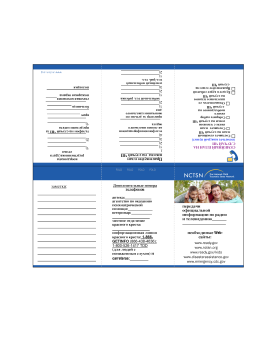
Family Preparedness Wallet Card (in Russian)
Allows families to list important telephone numbers and other information that could be useful in the case of an emergency.
The following resources on child trauma were developed by the NCTSN. To find a specific topic or resource, enter keywords in the search box, or filter by resource type, trauma type, language, or audience.

Allows families to list important telephone numbers and other information that could be useful in the case of an emergency.
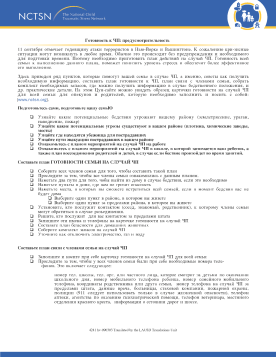
Accompanies the Family Preparedness Wallet Card. This guide helps families develop a safety plan so that they may be prepared in the event of a disaster. This is the Russian version of Family Preparedness: Thinking Ahead.
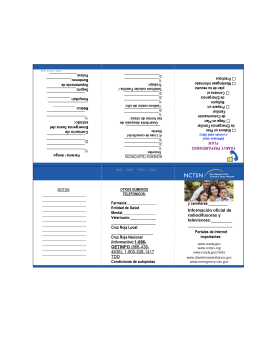
Permite a las familias enlistar números de teléfono importantes y otra información que podría ser útil en caso de una emergencia.
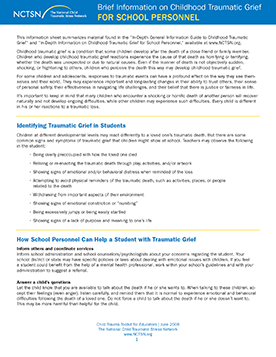
Offers information on childhood traumatic grief. This fact sheet provides descriptions of childhood traumatic grief, normal and typical grief, and what to do for childhood traumatic grief for teachers and school personnel.
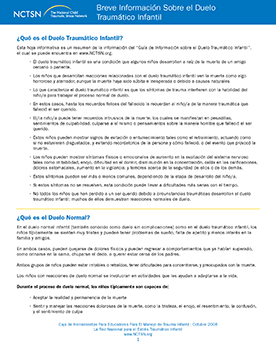
Ofrece información sobre el duelo traumático infantil. Este folleto informativo define lo que es del duelo traumático infantil, el duelo típico y normal y describe qué pueden hacer los maestros y el personal de la escuela ante el duelo traumático.
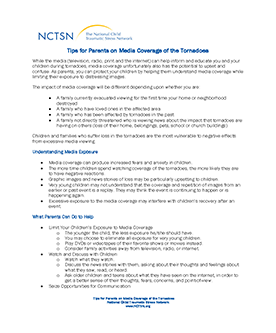
Gives information to parents and caregivers about media coverage following a tornado. This tip sheet describes what parents can do to help their children, media exposure after disaster events, and talks about what it is like when a family is a part of the story.
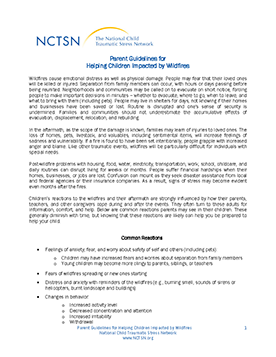
Offers parents guidance on helping their children after a wildfire. This fact sheet describes common reactions children may have after a wildfire, what to do to help, and self-care tips for parents.
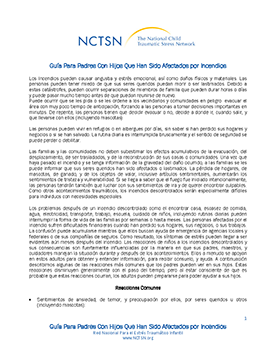
Offers parents guidance on helping their children after a wildfire. This fact sheet describes common reactions children may have after a wildfire, what to do to help, and self-care tips for parents.
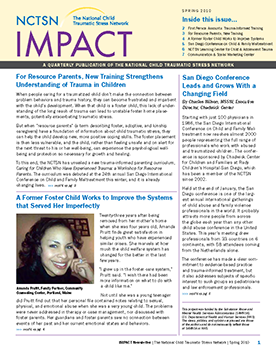
Focuses on foster care. We showcase Caring for Children Who Have Experienced Trauma: A Workshop for Resource Parents and interview a woman who grew up in the foster care system and is trying to change it.

Addresses the response to child sexual abuse. This webinar series provides information about special populations, secondary traumatic stress among providers, and collaborations with the media, among other topics.
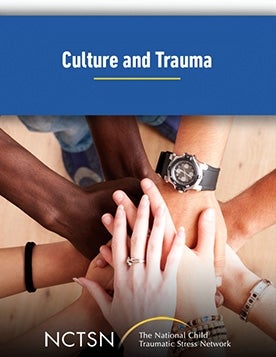
Addresses clinical, organizational, and staff training issues and describes unique challenges faced by specific populations at high risk for traumatic stress. This webinar series discusses a variety of issues at the intersection of culture and trauma in children and adolescents.

Describes how young children, school-age children, and adolescents react to traumatic events and offers suggestions on how parents and caregivers can help and support them.